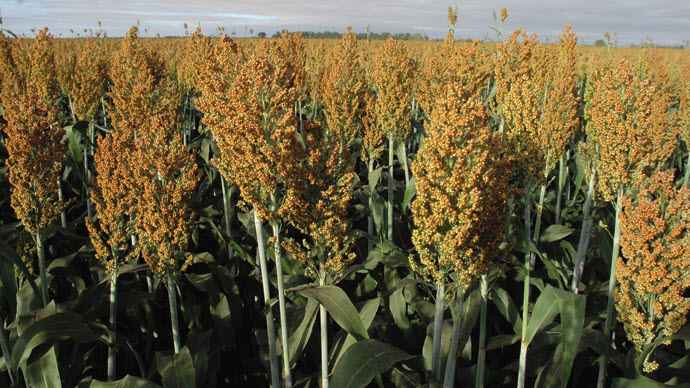What is Sorghum?
Chances are, you're probably asking yourself the exact question in the above caption. Well, in this case, this question has an answer!
What is sorghum (pronounced sore-gum)?
What is sorghum (pronounced sore-gum)?
Sorghum is also called milo in grocery stores, or on the ingredient labels in different foods, and it is a member of the grass family, meaning that its relatives include:
- Corn
- Wheat
- Barley
- Rye
- Oats
- + the many different varieties of grasses used in lawns, pastures, ect...
Sorghum and corn are probably more related to each other than any of the other grasses listed above, mainly because of their leaf and stem structure. When I think of "corn," my first reaction isn't to think that it is a grass, mostly because it doesn't look like grass. The same goes for sorghum. Rather, they look more like mini trees!
Sorghum doesn't have ears like corn, but has a head (looks kind of like a flower) on which the sorghum grains are produced.

Another characteristic of sorghum (and grass in general) is that it is self-pollinating. If you think about the grass in your lawn, and if you were to let it grow for an entire season without mowing it, your yard would essentially re-seed itself. No bees required. The same goes for wheat, barley, and other cereal grains. The only difference between cereal grains and lawn-grass is that cereals are annuals, and your lawn is a perennial.
To visualize self-pollination, look at the picture above, and if you can tell, every single "dot" on the head of the sorghum is a grain. Every grain would have been pollinated earlier by self-produced pollen.
Sorghum is very drought tolerant, unlike corn, and to continue contrasting sorghum with corn, it also has a slightly higher protein percentage. However, there are some chemical properties within sorghum that make it harder to digest than corn, as well as a lower starch content. Corn is often the preferred feed ingredient in chicken diets because of the yellow pigmentation (xanthophylls, which connote yellow yolks). Sorghum usually becomes a last resort for feed because of its lack of xanthophylls, which cause pale-colored yolks.
Sorghum has started to come into the industrial spotlight in recent years though, especially for the production of ethanol and other bio-fuels. All in all, sorghum is a very unique grain that gets overlooked, versus its preferred cousin, corn.
As always, any questions or comments are welcome!


Comments
Post a Comment